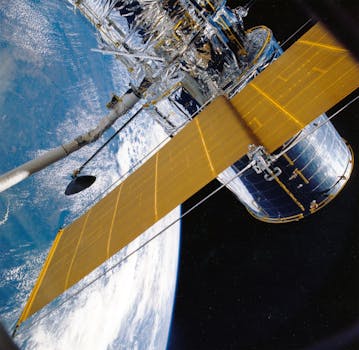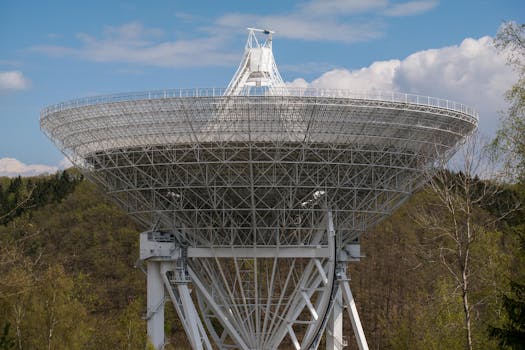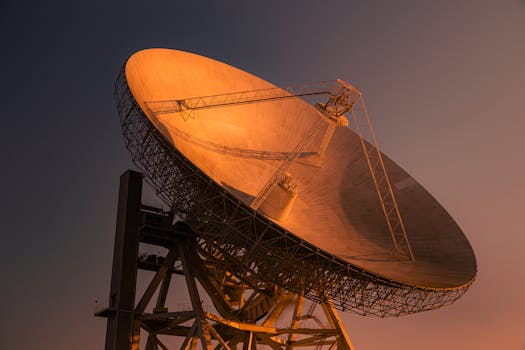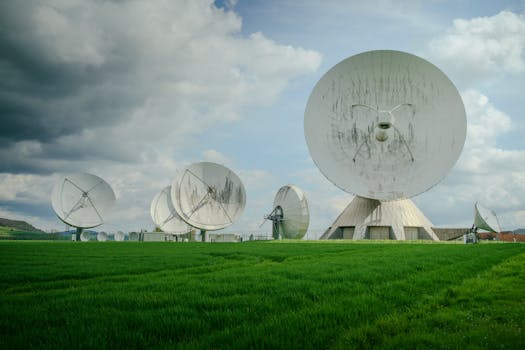The Future is Now: Exploring the Cutting-Edge Innovations in Satellite Telecommunications

The Future is Now: Exploring the Cutting-Edge Innovations in Satellite Telecommunications
The future is now, and it’s more connected than ever. Satellite telecommunications is at the forefront of this revolution, with innovations that are transforming the way we communicate, access information, and conduct business. In this article, we’ll delve into the cutting-edge developments in satellite telecommunications, and explore how they’re shaping the industry.
Satellite Telecommunications: The Future is Now

Satellite telecommunications is no longer just about providing internet access to remote areas. It’s about creating a global network that’s faster, more reliable, and more secure. With the advent of low-earth orbit (LEO) satellites, 5G integration, and advanced antenna technologies, the possibilities are endless. Companies like SpaceX, Amazon, and OneWeb are leading the charge, with constellations of satellites that will provide seamless coverage and unprecedented speeds.
LEO satellites, in particular, are game-changers. They operate at altitudes of around 1,200 miles, which is much lower than traditional geostationary satellites. This proximity to Earth enables faster data transfer rates, lower latency, and increased reliability. With LEO satellites, users can expect speeds of up to 1 Gbps, making them ideal for applications like online gaming, video streaming, and remote work.
5G Integration and the Internet of Things (IoT)

The integration of 5G technology with satellite telecommunications is a natural progression. 5G networks require a vast infrastructure of cell towers, fiber optic cables, and satellites to provide seamless coverage. Satellites will play a crucial role in extending 5G services to remote and underserved areas, where traditional infrastructure is lacking. This convergence of technologies will also enable the widespread adoption of IoT devices, which rely on low-latency, high-speed connections to function effectively.
The IoT is a vast network of devices that communicate with each other and the cloud, generating vast amounts of data. Satellite telecommunications will provide the necessary infrastructure to support this data deluge, enabling applications like smart cities, industrial automation, and precision agriculture. With the ability to connect devices anywhere, anytime, the possibilities for innovation are endless.
Advanced Antenna Technologies and the Role of Artificial Intelligence (AI)

Advances in antenna technologies are also transforming the satellite telecommunications industry. Phased array antennas, in particular, are gaining traction. These antennas use AI-powered beamforming to optimize signal strength and direction, resulting in faster data transfer rates and increased reliability. AI is also being used to optimize satellite operations, predict maintenance needs, and detect potential issues before they occur.
The use of AI in satellite telecommunications is still in its infancy, but the potential is vast. AI can help optimize network traffic, predict demand, and improve overall network efficiency. As the industry continues to evolve, we can expect to see more AI-powered innovations that will further transform the satellite telecommunications landscape.
Conclusion

In conclusion, the future of satellite telecommunications is here, and it’s more exciting than ever. With innovations like LEO satellites, 5G integration, and advanced antenna technologies, the industry is poised for unprecedented growth. As we continue to push the boundaries of what’s possible, we can expect to see new applications, new use cases, and new innovations that will transform the way we live, work, and communicate.
See more:





